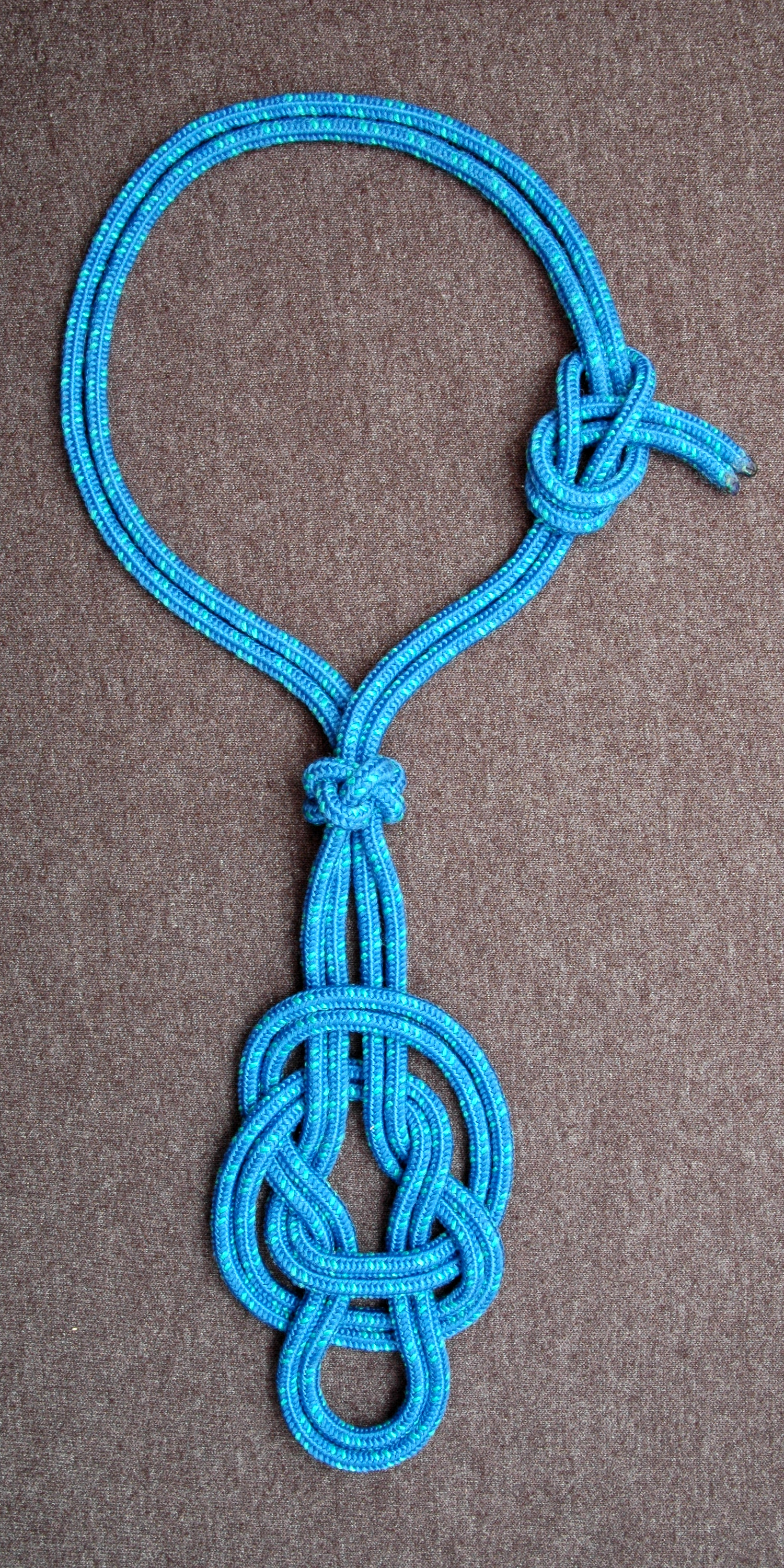|
Bottle Sling
The bottle sling (also called a jug sling, a Hackamore knot, or a Scoutcraft knot) is a knot which can be used to create a handle for a glass or ceramic container with a slippery narrow neck, as long as the neck widens slightly near the top. While classed with binding knots, such as the reef knot and miller's knot, the bottle sling is able to perform a function for which most other binding knots are unsuited. The bottle sling's specific form allows it to grip a cylinder, assuming it has even a slight flare or collar, and lift it along its axis when the knot is loaded by all four strands. With appropriate size cord, most wine bottles can be reliably suspended with this knot. History The bottle sling was described in detail by the Greek physician Heraklas in his first century monograph on surgical knots and slings. It was included under the name ''diplous karkhesios brokhos'' ("double jug-sling noose"). Clearly familiar with the knot, Heraklas provided three distinct tying ... [...More Info...] [...Related Items...] OR: [Wikipedia] [Google] [Baidu] |
Jury Mast Knot
The jury mast knot (or masthead knot) is traditionally used for jury rigging a temporary mast on a sailboat or ship after the original one has been lost. The knot is placed at the top of a new mast with the mast projecting through the center of the knot. The loops of the knot are then used as anchor points for makeshift stays and shrouds. Usually small blocks of wood are affixed to, or a groove cut in, the new mast to prevent the knot from sliding downwards.Clifford W. Ashley, ''The Ashley Book of Knots'' (New York: Doubleday, 1944), 212. Due to a lack of hard historical evidence there is uncertainty whether this supposed rigging knot was ever commonly used for rigging jury masts.Charles Hamel, "Investigations on the Jury Mast Knot [...More Info...] [...Related Items...] OR: [Wikipedia] [Google] [Baidu] |
